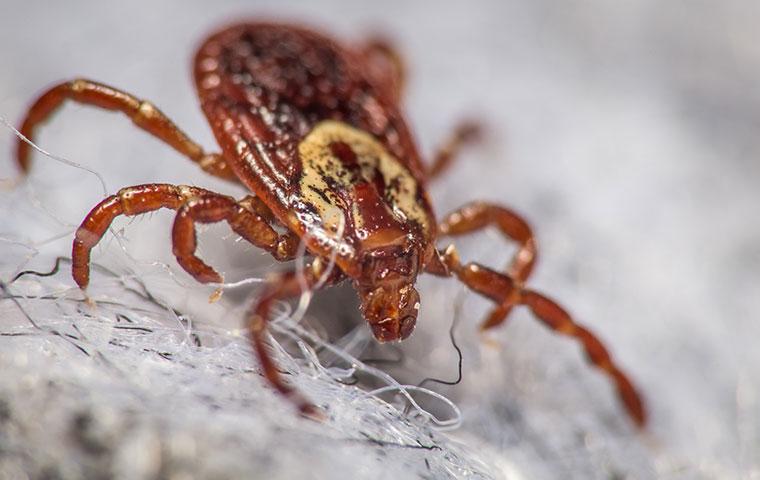
Ticks are a common pest threat that we all take seriously. Every year, more and more seem to grace us with their presence. You do everything you can to protect your pets from their harmful effects, but it should also be noted that ticks can just as easily affect humans. The diseases they carry and the problems they cause can be easily controlled by following our suggested actions.
Ticks Common To The Hudson Valley & Greater New York Area
There are a variety of ticks in existence; however, there are three main types that tend to call the New York region home. The ticks most common in our region include:
- Deer Tick: Deer ticks grow to be around ⅛ of an inch long with flat, red, and black bodies and black legs.
- American Dog Tick: American dog ticks can become as big as ½ of an inch in length with red/brown bodies.
- Lone Star Tick: Lone star ticks are similar in size to deer ticks and can be identified by a white spot on their bodies.
These ticks common to our region carry multiple dangerous diseases. The most commonly known disease carried by ticks is Lyme Disease. Lyme Disease tends to be carried by the deer tick and is a bacterial infection that can cause numerous health problems if left untreated in the early stages. The first symptoms include a bullseye-shaped rash, fever, headache, and fatigue.
When it comes to the American dog tick, Rocky Mountain spotted fever is one of the most common diseases paired with this type, which when left untreated, can be deadly. Symptoms generally include severe fever, chills, muscle aches, and headaches. Tick paralysis can also be carried by the American dog tick and can lead to severe respiratory issues and muscular weakness.
The lone star tick is primarily known to cause Southern-tick-associated rash illness and various infections due to embedment in the skin. Ticks and the diseases they carry are a serious matter. Be sure to practice caution when removing an embedded tick. It is always best to seek medical attention when dealing with tick removal.
Where Can You Find Ticks Hanging Out In Hudson Valley?
The ticks mentioned above tend to spend their time in shady places, areas of low-cut vegetation (like grass), and along roads and walkways where hosts (pets and humans) are most likely to pass by. Ticks tend to hitch a ride with both humans and animals (generally dogs and cats). They either simply hitch a ride or burrow into the skin for feeding. If you have pets, ticks can easily access your home via your pets and cause an infestation and feeding problem.
How Can I Protect My Hudson Valley Property?
There are many ways you can proactively protect yourself and your Hudson Valley property from the dangers of ticks. When it comes to the outdoors, be sure to keep the yard debris to a minimum and minimize small, secluded, shady areas if possible. Make sure your yard is trimmed, well maintained, and free of overwhelming weeds or vegetation growth. It’s also best to deter wildlife hosts from the property by having a fence, keeping pet food off the porch, and making sure all trash cans are secure and closed to keep animals like skunks and raccoons away from your property and pets. These types of wildlife could possibly be carrying ticks as well as their diseases.
When it comes to you and your pets, be sure to thoroughly inspect yourself and your children when coming in from the outside. Check clothing as well for any ticks that may not have made it to the skin. Be sure to have your pets regularly checked out for any tick-related diseases, keep them well-groomed, and don’t let them back in the house without first inspecting for ticks. Bug spray is also a great way to enjoy the outdoors with extra protection against any possible ticks.
Contact The Experts At Pestmaster® Services For Tick Infestation Control
If you want to learn more about ticks and how to protect your family and home, or if you have a tick issue that needs resolving, call the experts at Pestmaster® Services for professional tick control. We have the experience and resources to help make your home as tick-free as possible. Since 1999, we have been serving the Hudson Valley region in an environmentally friendly and effective manner. Let us know how we can help you.
.png)
